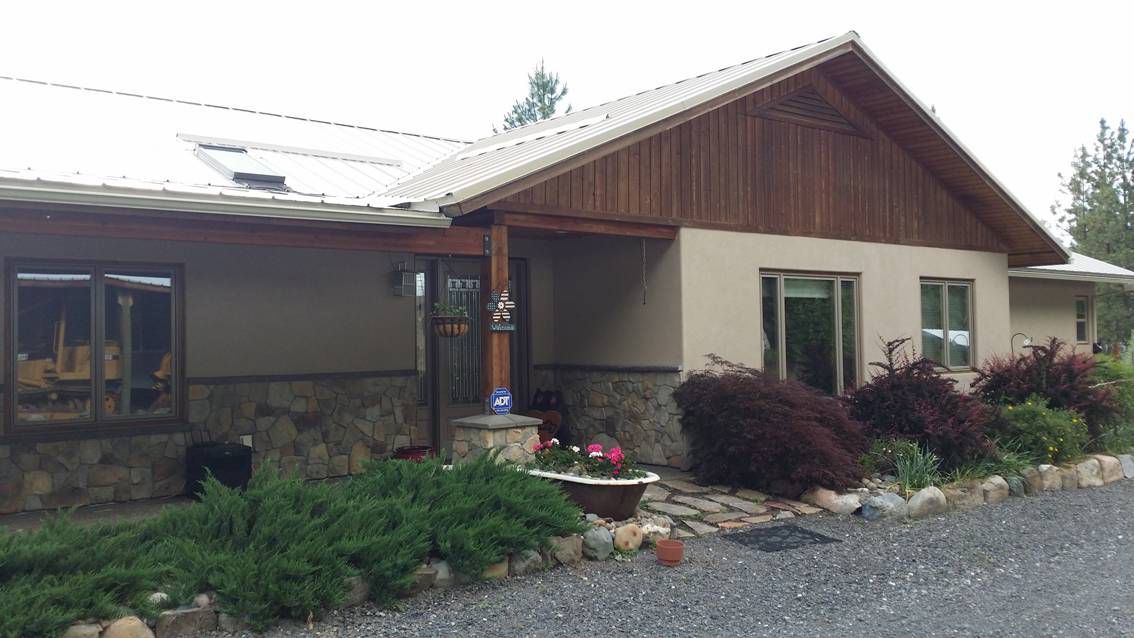What’s a New Home Cost?
This month’s feature is about the cost of a new home, from simple to extravagant.
If you live in the local area, you can also find this blog in the Silverado Express publication under my monthly column - "Contractor Corner."
_________________________
Every time people ask What’s the cost per square foot? I’d like to ask, What’s the cost per pound of a new car? There is such a range of prices in cars and it mostly depends on what features the buyer wants. Do you want stereo or XM? Automatic or manual? Rims or hub caps? These answers boil down to the buyer’s choices which, in turn, will drive the cost. Same with the housing industry… there’s a big difference between a $95 per square foot home and a $350 square foot home. That cost is mainly determined by the homeowner’s choices on the finishes of their home and where they choose to build.
Specifically, from a contractor’s perspective, the main questions that affect the cost of a new home are...
Where is the property located?
What’s the type of soil and slope?
And, very importantly, what are the homeowner’s design preferences?
Some of the preliminary factors to building a home – such as location, soil type, power and well systems in place or not and roads built in – can really make a monetary statement on their own, even prior to building the house. These initial expenses factor in to the overall cost to build a home, but are considered ‘extras’ – not included in the contractor’s cost to build.
Where is the property located?
People ask ‘why does that matter?’ This is a very important consideration for a contractor
because I need to know if we’re building on sand or rocks and what kind of slope, if any. A house placed on a slope will most definitely cost more to build than a house on a flat lot, mainly because homes on sloped lots often require more costly gravel backfill material at the foundation. They also might need expensive retaining walls to create a flat area for a driveway or hold back soil at the walk-out. So carefully analyze the impact that your sloped lot may have on your design. It’s best to design a house that’s appropriate for the lot without the unreasonably expensive construction techniques.
How much do you know about the soil on your home site? Soils drain and retain water differently, and soils have vastly differently capacities to bear structural loads. Is the site developed or undeveloped? An undeveloped lot is one where the utilities – electricity, water, gas and sewer – need to be calculated in. The sewer system can also weigh into extra costs depending on the soil type and slope of the lot, and the available area(s) for the system. Some soils can be perked easier and a gravity system can be added, and some soils require a pressurized system which costs more money. And since a private sanitation system is more expensive than connecting to a public one, the cost isn’t typically considered in the ‘base’ cost of building a house. Again, it’s usually an ‘extra.’
Other questions related to extras are…
- Does a well need to be drilled?
- Is there an existing road or does a new road or driveway need to be instated to the home? If so, how long and steep is the road or driveway? Can the concrete truck make it in or any other heavy equipment that’s needed for the job?
- Do you have power on your property? If not, there’s the extra cost of putting power in.
Another consideration about the location is are we building five miles from my shop or 60 miles away? There’s a difference in the cost because I’m paying my guys to travel plus the gas.
Simple to Extravagant
We’ve built an 1800 square foot home for over a half a million dollars and we’ve built an 1800 square foot home for $160,000. The difference was drawn merely from homeowner preferences. The less expensive home was completely livable but the finish work was much more simple. For example, the windows were wrapped in sheetrock, not wood. The walls were only primed for painting. They also chose Formica countertops and they waited on having finished flooring put in the house.
The half mil house had the best of everything, including quartz countertops, the finest appliances, all wood trim, post-and-beam construction with SIP-panel walls, geo-thermal radiant-heated concrete floors, a built-in steam room in their walk-in tile shower, an $8,000 slipper tub, the best windows that Anderson makes, cedar siding, standing seam metal roof and a landscaped yard.
As far as rooms go, kitchen and bathrooms are what really drive the cost. Bedrooms can be built inexpensively. Here’s a rundown of other home features where the rubber meets the road on costs. Guess which option costs more, and in many cases double:
Flooring costs… Do you want carpet and laminate or tile and hardwood?
Exterior siding … Do you prefer T-111 or stone & fiber cement?
Roofing … Do you want composition, tile or standing seam metal roofing?
Interior trim… Do you want to go with MDF or real wood?
Bath appliances… Do you want an acrylic insert for a shower or walk-in tile?
Countertops… Does Formica work or do you prefer granite or stone?
Also your choices for kitchen appliances, electrical and plumbing fixtures and heating systems do drive the cost. What it boils down to is customer preference. A major point to consider in the cost of a new home is that you can control the costs by the choices you make on the appliances, the flooring, the countertops, tile and so on. For some, I recommend choosing a design professional to assist in making these cost-saving decisions.
I love building the nicest custom homes with the custom hardwoods and ceramic tile, but not everyone can afford that. Most everybody in my experience wants the best and wants their new home to look the best. Not everybody wants to pay for it, especially when they find out the actual cost in today’s market. So like picking out a new vehicle, the cost of building a new home is not a nutshell answer. There’s tiers of cost levels based upon preferences.
There’s a key home calculation resource for homeowners on our About page: tab down to Resources then click on the Complete Design logo. That link will lead to a page called ‘Residential Construction Costs.’ There you can fill out your preferences for every part of your home, from top to bottom and get a good idea of how much the home will cost per square foot and what features it will have.







